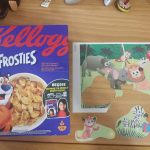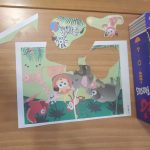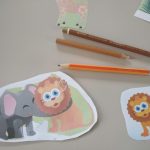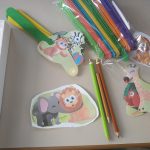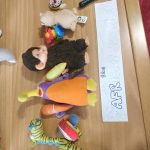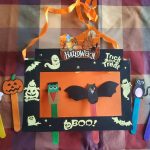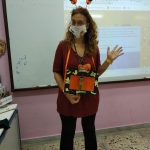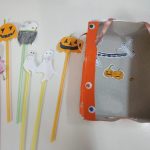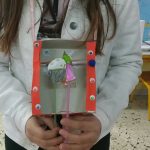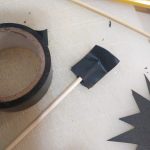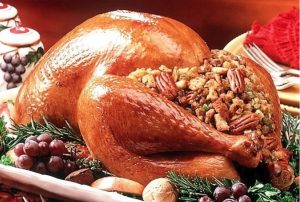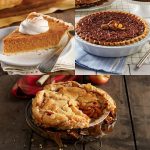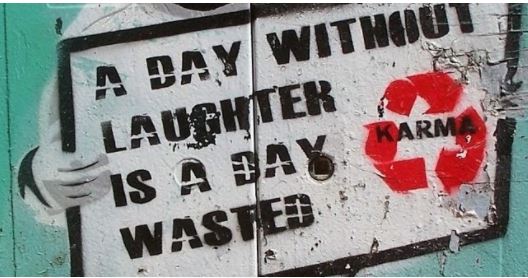This is my version of the ‘A party in the jungle’ using an empty cereal box.
I made my own small puppet theatre based on the idea of the Halloween one by Kids English Theatre (https://www.youtube.com/watch?v=6ZPQMy6cZBQ)
Here’s what I did: I took a box of cereals. I used a green background to convey the idea that it’s a jungle. I cut the figures carefully from the PEAP material (http://rcel.enl.uoa.gr/peap/taksi/kyklos-b/party-jungle?fbclid=IwAR06F3sPtRRn93ZTuoVWyVb47l32MiqLH-QgLUqZNufn2uPlQ7f-UOde04Y#material).
I stuck the image of the elephant and Leo on another piece of paper and added the missing parts as best as I could. I used the PEAP flashcards for Leo (http://rcel.enl.uoa.gr/peap/taksi/kyklos-b/fun-animals?fbclid=IwAR0-n-EXV0RA_J1icO7RtUlMNDSOX3ht0qv_UH8bUrodoExy3aPR1nquew0#material)
Don’t throw away the remaining bits of paper! You can use them in your green background.
Special thanks to my younger daughter, Kate, who was my very patient helper!
Well, hope you find it useful… https://www.youtube.com/watch?v=bydhWjRH9io&fbclid=IwAR143qf9AgWBPbWoc1un1Qe0n0VfyqO4e56vNdnBruNQyjuc_mp_lq4qigg

